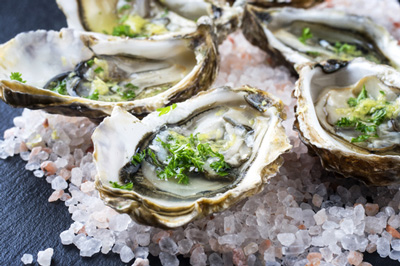Study finds sensing mechanism in food poisoning bug
- Like
- Digg
- Del
- Tumblr
- VKontakte
- Buffer
- Love This
- Odnoklassniki
- Meneame
- Blogger
- Amazon
- Yahoo Mail
- Gmail
- AOL
- Newsvine
- HackerNews
- Evernote
- MySpace
- Mail.ru
- Viadeo
- Line
- Comments
- Yummly
- SMS
- Viber
- Telegram
- Subscribe
- Skype
- Facebook Messenger
- Kakao
- LiveJournal
- Yammer
- Edgar
- Fintel
- Mix
- Instapaper
- Copy Link
Posted: 5 July 2016 | Victoria White, Digital Content Producer | No comments yet
Researchers have uncovered a mechanism that Vibrio parahaemolyticus use to sense when they are in the human gut, where they release toxins…


Researchers have uncovered a mechanism that a type of pathogenic bacteria found in shellfish use to sense when they are in the human gut, where they release toxins that cause food poisoning.


The researchers, from UT Southwestern Medical Centre, studied Vibrio parahaemolyticus, a bacterium that contaminates shellfish in warm saltwater during the summer. The bacterium thrives in coastal waters and is the world’s leading cause of acute gastroenteritis. About a dozen Vibrio species cause infection in humans and Vibrio parahaemolyticus is one of the three most common culprits.
The study found that two proteins made by Vibrio parahaemolyticus work together to detect and capture bile salts in the intestines of people who eat raw or undercooked seafood containing the bacteria.
“When a person eats, acids in the stomach help break down the meal, and bile salts in the intestine aid in the solubilisation of fatty food. When humans eat raw or undercooked shellfish contaminated with Vibrio parahaemolyticus, the bacteria use those same bile salts as a signal to release toxins,” explained Dr Kim Orth, Professor of Molecular Biology and Biochemistry at UT Southwestern.
First study to implicate two genes in signalling
Evidence is increasing that several bacterial pathogens that cause gastrointestinal illness sense bile salts. But until now, the mechanism that those pathogens use for doing this has remained unknown. In previous studies, only one bacterial gene had been implicated in receiving and transmitting the gut-sensing signal, Dr Orth said.
“We discovered that not one, but two genes are required for Vibrio to receive the bile salt signal. These genes encode two proteins that form a complex on the surface of the bacterial membrane. Using X-ray crystallography, we found that these proteins create a barrel-like structure that binds bile salts and receives the signal to tell the bacterial cell to start making toxins,” she said.
Future experiments will aim to understand how binding of bile salt by this protein complex induces the release of toxins.
“Ultimately, we want to understand how other pathogenic bacteria sense environmental cues to produce toxins. With this knowledge, we might be able to design pharmaceuticals that could prevent toxin production, and ultimately avoid the damaging effects of infections,” she said.








